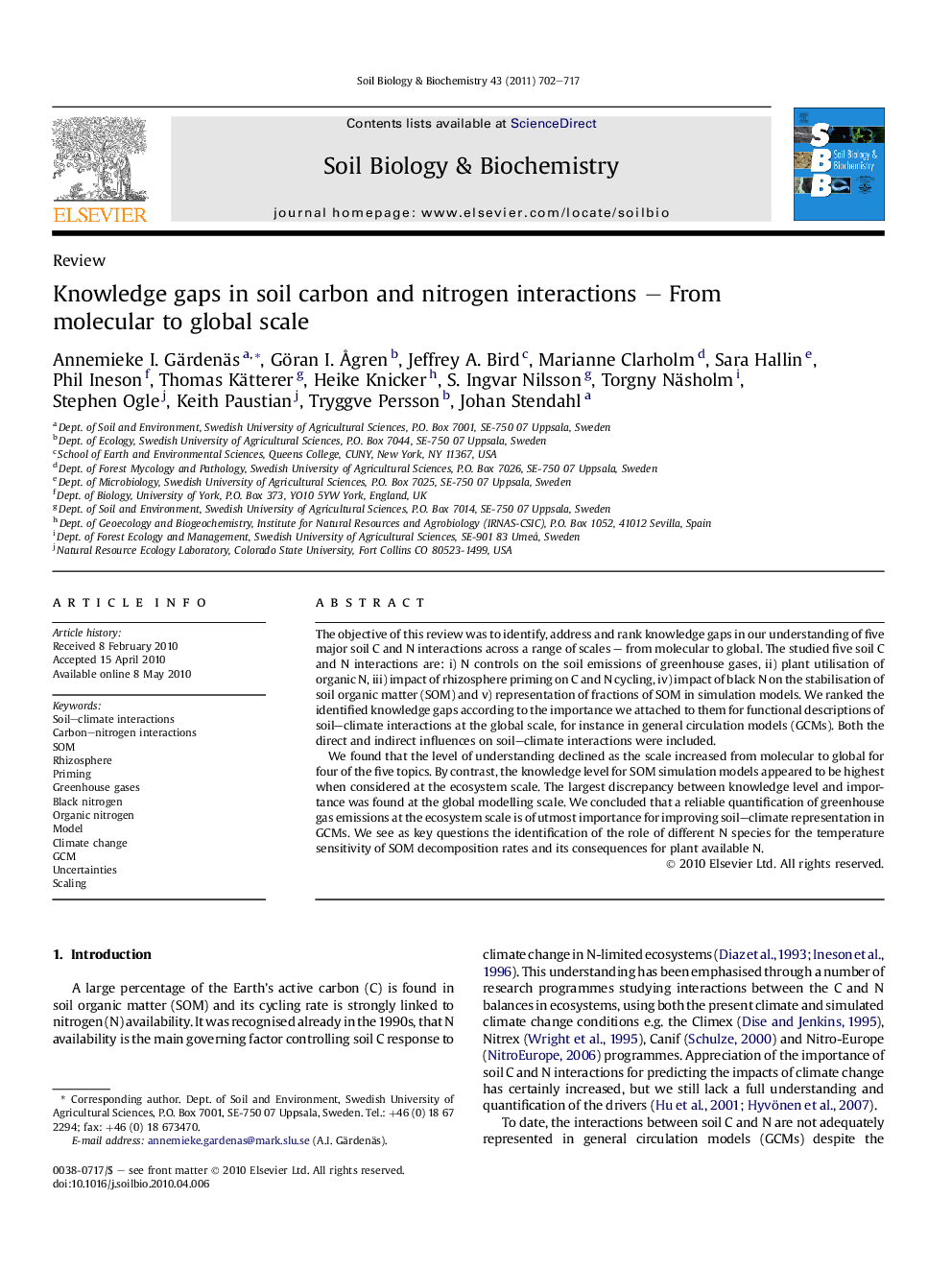| Article ID | Journal | Published Year | Pages | File Type |
|---|---|---|---|---|
| 2025449 | Soil Biology and Biochemistry | 2011 | 16 Pages |
The objective of this review was to identify, address and rank knowledge gaps in our understanding of five major soil C and N interactions across a range of scales – from molecular to global. The studied five soil C and N interactions are: i) N controls on the soil emissions of greenhouse gases, ii) plant utilisation of organic N, iii) impact of rhizosphere priming on C and N cycling, iv) impact of black N on the stabilisation of soil organic matter (SOM) and v) representation of fractions of SOM in simulation models. We ranked the identified knowledge gaps according to the importance we attached to them for functional descriptions of soil–climate interactions at the global scale, for instance in general circulation models (GCMs). Both the direct and indirect influences on soil–climate interactions were included.We found that the level of understanding declined as the scale increased from molecular to global for four of the five topics. By contrast, the knowledge level for SOM simulation models appeared to be highest when considered at the ecosystem scale. The largest discrepancy between knowledge level and importance was found at the global modelling scale. We concluded that a reliable quantification of greenhouse gas emissions at the ecosystem scale is of utmost importance for improving soil–climate representation in GCMs. We see as key questions the identification of the role of different N species for the temperature sensitivity of SOM decomposition rates and its consequences for plant available N.
